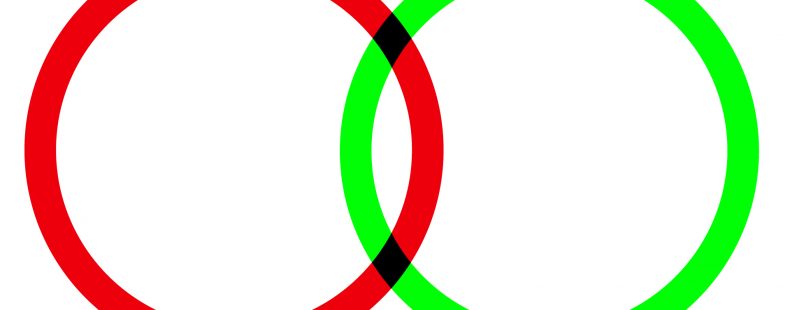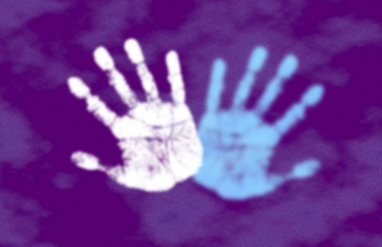Have you ever taken an art class, in elementary school maybe? If so, you may be familiar with the color wheel. Isaac Newton is credited with the creation of the first color wheel, which is based on the light spectrum. Essentially, the color wheel is a way to show complementary and contrasting colors. If you take a look at red on the color wheel, you’ll see it is directly across from green. In this article, we are going to look at green as an antonym, or “a word opposite in meaning to another,” of red. As you will see, these oppositions don’t just include colors, but extend into symbology, emotions, and even the elements.
🟢 Green is a secondary color
The color red is a primary color that sits at the far end of the visible spectrum of colors. In contrast, green is a secondary color, “a color produced by mixing two primary colors.” Specifically, green is a mix of yellow and blue. In fact, every primary color (red, blue, and yellow) is opposite a secondary color (green, orange, purple) on the color wheel.
Shades of green
If you break down the color spectrum even further, you arrive at tertiary colors, which are produced by mixing two secondary colors. Tertiary means “of the third order, rank, etc.; third.” Some examples of tertiary colors that sit opposite reds are blue-green and yellow-green.
Synonyms for blue-green include:
- azure
- cerulean
- aquamarine
Synonyms for yellow-green include:
- jade
- olive
- bice green
- chartreuse
Keep your language fresh and verdant with these additional words for the color green.
Green is a cool color
Green is a cool color, and by that we don’t mean it is “great; fine; excellent,” although it is all of those things, too. In color theory, cool refers to “(of colors) with green, blue, or violet predominating.” (Red is, of course, a warm color.) Cool colors like green are known for promoting calm emotions, which is why they are often used in places like office spaces and hospital rooms.
Green is calm
As we noted already, cool colors like green promote feelings of calm. This is likely why green is a color commonly associated with calm generally. Calm here means “free from excitement or passion; tranquil.” In contrast, red is often associated with rage or anger.
Green is optimistic
Green is famously the color of money (despite the fact that it isn’t in most countries outside of the United States). For this reason, as well as because it is seen in growing plants, the color green is symbolic of optimism, “a disposition or tendency to look on the more favorable side of events or conditions and to expect the most favorable outcome.” In particular, green is connected to prosperity, “a successful, flourishing, or thriving condition, especially in financial respects; good fortune.”
Do you know the opposite of optimistic?
Nature is green
Often, green is the color used to represent nature and ecology more generally. This is because growing plants are green. Other themes connected with this association to nature are those of rebirth and freshness. As the Spanish playwright Pedro Calderón de la Barca wrote in 1726, “Green is the prime colour of the world, and that from which its loveliness arises.” This is in opposition to the color red, which is associated with death and destruction.
Green symbolizes water
While today we often associate water with the color blue, in the Medieval Ages, it was more commonly represented as green. In European Medieval cosmology, there were four basic elements, each depicted with a color: fire (red), air (white), earth (black), and water (green). This was part of a worldview we still see elements of in our culture today—just think of the popular anime The Last Airbender for an example of this. Yet again we see how green (water) is in opposition to red (fire).
Green with envy
So far, we have seen a number of examples of how green is positive while red is negative. However, green is also used to represent some negative emotions, namely envy. Envy, sometimes also referred to as “the green-eyed monster,” is “a feeling of discontent or covetousness with regard to another’s advantages, success, possessions, etc.” In ancient and Medieval times, it was believed that jealousy was caused by an excess of yellow bile, which would literally cause one’s complexion to become “green with envy.” The color red, in contrast, is associated with blood and therefore love, passion, and virility.
Green means go
If you’ve ever been stuck at a traffic light waiting for a green light, you know instinctively that red means stop and green means go. But why is this? The color red has long been a symbol for danger—you even see this with animals in the wild. According to studies, red is one of colors used most frequently by animals as a warning color to predators. It was much later, however, that green became associated with “go,” as in street signs. The first electric signals for trains used white lights to mean all-clear or “go.” This was too easily confused with other lights, such as a reflection or a star, and so green was chosen instead.
White and blue mean heaven
Thus far, we have only looked at the color green as the opposite of red, but it isn’t the only color we can think about in contrast. In the Christian religion, red is commonly used to represent hell, specifically the fires of hell and the devil. The opposite of hell, heaven, was traditionally represented by the color blue in antiquity. However, in modern times it is more often shown as white, a color associated with purity and healing.
Bonus: red and green mean Christmas
Green doesn’t have to always exist in opposition or contrast to red. During the Christmas season, these two colors come together as the dominant motif. According to Arielle Eckstut, the author of The Secret Language of Color, pagan winter solstice celebrations featured the holly, a plant with green leaves and red berries, even in the winter. This filtered into the Christmas canon and was amplified by marketing companies in the 20th century through popular media campaigns like the Coca-Cola Santa Claus. Today, one of the few places you can find red and green together is during the month of December.
As you have seen, there are many ways to think about the various possible antonyms of red. Don’t be green; test your knowledge of these opposites of red with our quiz here.














